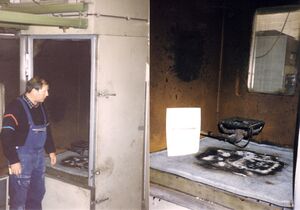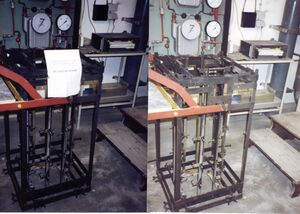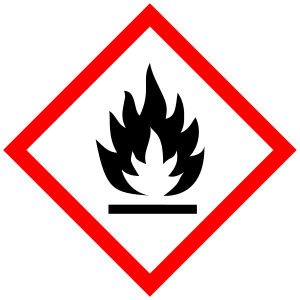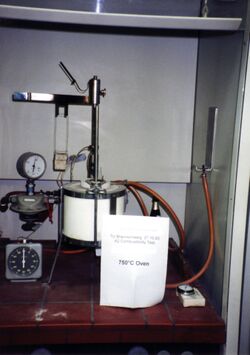قابلية الاحتراق والاشتعال
قابلية الاشتعال (إنگليزية: flammability) ترجع لمدى السهولة التي تشتعل بها المادة لتسبب نار أو احتراق. المواد التي تشتعل في درجات الحرارة العادية تعتبر قابلة للاشتعال، باختلاف التعريفات النوعية لدرجة الحرارة. فمثلا, نقطة الوميض هى أهم الخصائص لقابلية الاشتعال. فنقط الوميض الأقل من 200 F° (تساوي 93.3 C°) يتم تصنيفها طبقا لتعليمات السلامة والصحة المهنية الأمريكية على أنها مواد خطرة. مثال للسوائل القابلة للإشتعال البنزين، الإيثانول، الأسيتون. وقود الديزل من أقل مواد الوقود الثقيلة القابلة للإشتعال, كمات أن الديزل الحيوي يعتبر من المواد غير القابلة للاشتعال وله نقطة وميض أعلى من 300 F°، رغم أنه يشتعل داخل محركات الديزل.
تصنيف مواد البناء
DIN4102 A2 gypsum fireproofing plaster leavened with polystyrene beads
DIN 4102 B1 (difficult to ignite/often self-extinguishing) Silicone caulking used as a component in firestopping piping penetration
DIN 4102 B3: Polyurethane foam (easy to ignite = many hydrocarbon bonds usually)
Materials can be tested for the degree of flammability and combustibility in accordance with the German DIN 4102. DIN 4102, as well as its British cousin BS 476 include for testing of passive fire protection systems, as well as some of its constituent materials.
The following are the categories in order of degree of combustibility and flammability:
| التصنيف | درجة قابلية الاشتعال | أمثلة |
|---|---|---|
| A1 | 100% noncombustible (nicht brennbar) | |
| A2 | ≈98% noncombustible (nicht brennbar) | |
| B1 | Difficult to ignite (schwer entflammbar) | intumescents and some high end silicones |
| B2 | Normal combustibility | wood |
| B3 | Easily ignited (leicht entflammbar) | polystyrene |
A more recent industrial standard is the European EN 13501-1 - Fire classification of construction products and building elements—which roughly replaces A2 with A2/B, B1 with C, B2 with D/E and B3 with F.
B3 or F rated materials may not be used in building unless combined with another material that reduces the flammability of those materials.
خصائص هامة
نقطة الوميض
A material's flash point is a metric of how easy it is to ignite the vapor of the material as it evaporates into the atmosphere. A lower flash point indicates higher flammability. Materials with flash points below 100 °F (38 °C) are regulated in the United States by OSHA as potential workplace hazards.
ضغط البخار
- The vapor pressure of a liquid, which varies with its temperature, is a measure of how much the vapor of the liquid tends to concentrate in the surrounding atmosphere as the liquid evaporates. Vapor pressure is a major determinant of the flash point, with higher vapor pressures leading to lower flash points and higher flammability.
وصلات خارجية
المصادر
- ويكيبيديا الإنجليزية.







